|
|
|
|

Fossils of Newfoundland
The province of Newfoundland and Labrador is world famous for its fossils and has long been favored by collectors and researchers. In eastern Newfoundland, the earliest Cambrian rocks contain small shelly fossils, trace fossils and rare microbial mounds (stromatolites and/or thrombolites); these occur in marine-deposited shale, sandstone and limestone. In late Early Cambrian to Ordovician rocks, acritarchs and trilobites are the most common fossils. They occur in marine-deposited shale and slate, sandstone and limestone on the Avalon Peninsula (including Bell Island), the Bonavista Peninsula (including Random Island) and the Burin Peninsula. Accompanying the trilobites may be less abundant inarticulate brachiopods, graptolites and hyolithids. Bell Island is world famous for its Early Ordovician trace fossils (tracks, trails and burrows produced by trilobites and soft bodied animals).
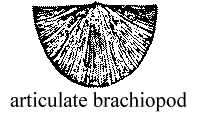
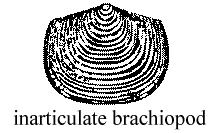
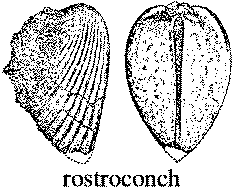

Western Newfoundland and southeastern Labrador have the greatest variety of fossils. Marine fossils occur in conglomerate, limestone and marble, sandstone, shale and slate of Cambrian, Ordovician, Silurian, Devonian and Carboniferous age; they variably include acritarchs, archaeocyathids, asteroids (starfish), bivalves, articulate and inarticulate brachiopods, bryozoa, cephalopods, chitinozoan and conodont microfossils, conularids, corals, crinoids, gastropods, graptolites, hyolithids, microbial mounds (stromatolites and thrombolites), monoplacophorans, ostracodes, rostroconchs, sponges, trace fossils and trilobites. These occur on the Port au Port Peninsula and the Great Northern Peninsula.
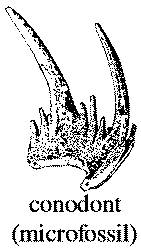
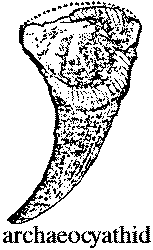
In the Deer Lake basin and the Anguille Mountains, terrestrial- and freshwater lake-deposited sandstone and shale locally contain plant and fish remains. Greater Labrador holds the distinction of having both the oldest and youngest fossils in the province. The oldest fossils are approximately 2 billion years old (Paleoproterozoic) and have been found in several different areas. In western Labrador, microbial mounds (stromatolites) are extensively developed in the Denault Formation at Marion Lake. In northern Labrador, apparent microfossils have been reported from the Mugford Group, in addition to coal(!) of probable bacterial origin. The youngest fossils are Cretaceous age insect and plant fossils recovered from the Redmond iron ore deposit of the Knob Lake District of western Labrador; unfortunately, no dinoaur remains have been found. [During the offshore oil exploration on the Grand Banks (off eastern Newfoundland), however, dinosaur bones were encountered by the drills.]
Paleontologists and biostratigraphers (geologists who study fossils) have long recognized that fossil assemblages occur in a certain order in the sedimentary rock record. These assemblages have been used to define biostratigraphic zones. Zones are typically named for their most common and/or distinctive species. The ase of each zone is defined by the first appearance of its characteristic species. The top of a zone is automatically defined by the base of the next zone. Two or more zones grouped together form a geologic stage. Stages are linked to form a geologic series. Series combine to form a geologic system or period. The zone is therefore the fundamental building block of the geological time scale. Consequently, discussions of geological history which ignore the timing provided by fossils and fossil zones, do so at their own peril. Trilobites, graptolites, and brachiopods (macrofossils) and conodonts (microfossils) are particularly useful for dating rocks of the Cambrian, Ordovician and Silurian systems. They had a high rate of evolution during the Cambrian, Ordovician and Silurian periods. The composition of the faunas changed many times so that many zones are recognized. At the same time, the above organisms were abundant and widespread. This has made it possible to correlate faunas of the same age over great distances. Twenty-five years ago, the stratigraphy of the Cambrian-Ordovician platform and platform-edge sequences of western Newfoundland was very poorly understood. Only in the last twenty-one years has it been sorted out, and fossils (chiefly trilobites, conodonts and graptolites) have provided most of the critical stratigraphic control. Rocks of different ages can strongly resemble each other, particularly when the original sediments were deposited in similar environments. Fossils therefore provide an elegant way to quickly discriminate between various rock units. The current oil and gas exploration underway in western Newfoundland is a direct consequence of the more detailed stratigraphy made possible by biostratigraphic control.
The Cambrian trilobite faunas of eastern Newfoundland contrast sharply with those of western Newfoundland (and most of North America). This is because the two areas were originally in different climatic zones on opposite sides of an ancient ocean called Iapetus. While western Newfoundland (and most of North America) was located at or near the equator in relatively warm, shallow water, eastern Newfoundland was located in higher (temperate to polar) latitudes and covered by relatively cool, deep water. Continental drift later brought the two areas together. The Cambrian faunas of eastern Newfoundland (also New Brunswick, Nova Scotia, Massachusetts) in fact have more in common with those of Norway, Sweden, England, Wales, France, Spain, Germany and the Czech Republic (Bohemia). These faunas collectively belong to what is called the Acado-Baltic faunal province. Eastern Newfoundland is one of the best places in the world to examine Acado-Baltic trilobites.
When looking for fossils, it important to remember that complete specimens are rarely found. While complete specimens are better for scientific description in paleontological studies, even a poorly preserved fossil fragment is often enough for field identification and dating of rocks. Fossils can be found by picking through weathered rubble along cliffs, beaches, streams, quarries, road and railway cuts and rock outcrops. Finding them in place, however, requires a careful layer-by-layer examination of the enclosing sedimentary rocks with a hammer and chisel. Many Newfoundland fossils are quite small and easily overlooked. It is wise, therefore, to have a magnifying glass or a hand lens for checking favorable rock types. Good eye protection is essential, preferably in the form of safety glasses. A good geological hammer with either a chisel or a point made of well tempered, shatter-free metal is advisable. A stone chisel and small sledge hammer are also useful. Broken fossil specimens can be repaired in the field with nontoxic white glues such as Lepage Bond Fast. Modelling clay, liquid latex (such as Lewiscraft rubbertex compound or ETI Mold Builder) or plaster can be used to obtain a replica of an otherwise nonretrievable specimen. Fossils which can't be collected may also be photographed or sketched. After collection, all specimens ought to be securely wrapped in tissue or newspaper and then placed in a well labelled bag to prevent damage during transportation. It is also a good idea to note the location of the fossil collection on a map and/or in a fieldbook in order to make it easier to find again if the need arises.
Fossil collecting is restricted in National and Provincial Parks, and Ecological Reserves. Only scientists holding valid permits can collect fossils from these areas. There are currently three declared Ecological Reserves in the province:
In eastern Newfoundland, the world-famous Manuels River site (notable for its Cambrian trilobite faunas) is protected under the stewardship of the Manuels River Natural Heritage Society.
Fossil species are generally identified by comparing collected specimens with those illustrated in drawings and/or photographs in publications. Generally, if a specimen cannot be identified in this way, it is probably a new species. When fossil genera or species have not been formally defined in scientific publications, they are known as gen., sp., spp. or sp. nov., standing for genus, species (singular), species (plural) and new species, respectively. Generic names enclosed by quotation marks ("Agnostus") are meant to be informal, and the abbreviation cf. means "similar to but not neccessarily identical to".
Provincial Paleontologist, Government of Newfoundland and Labrador, Department of Mines and Energy, Geological Survey, P.O. Box 8700, St. John's, NF, A1B 4J6 Canada Phone: (709) 729-2163, Fax: (709) 729-4270, Email: wdb@zeppo.geosurv.gov.nf.ca Website: www.geosurv.gov.nf.ca/mapping/boyce.html
This article may not be copied, distributed or reprinted in any form without the author's permission. To contact the author, please use the e-mail address provided. If you are unable to contact the author, please contact the Canadian Rockhound. Authorized reprints must acknowledge the author and the Canadian Rockhound, and include the website URL address of the Canadian Rockhound. Document Number: CR9701301

Copyright ©1997 Canadian Rockhound
Images of minerals are Copyright ©1996
theImage.com
Magazine Issues |
News & Events |
Junior Rockhound |
Resources
|